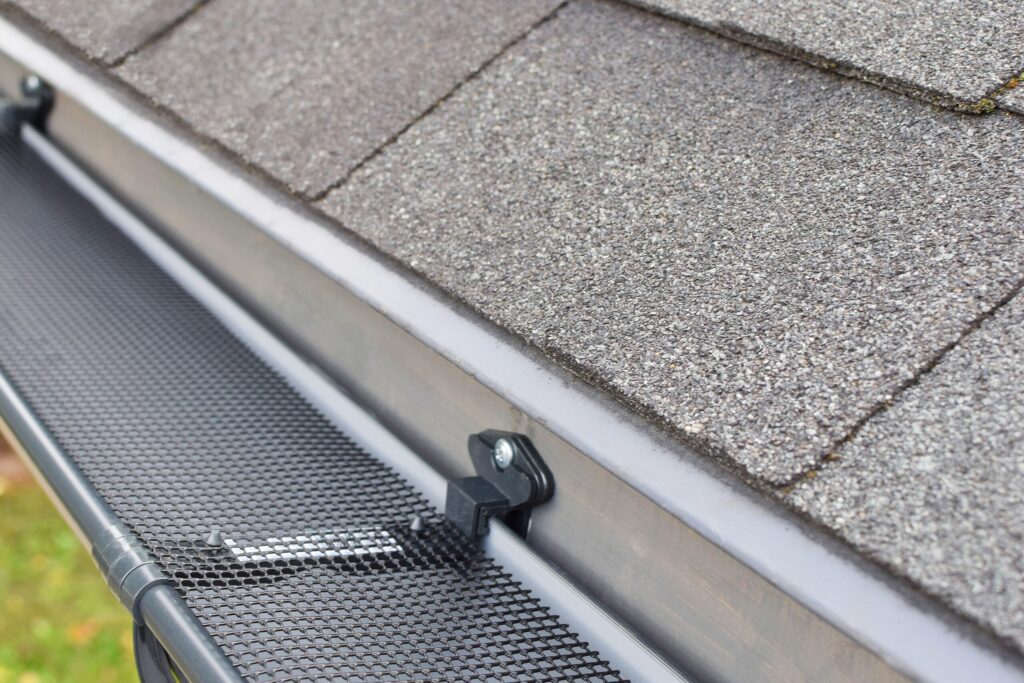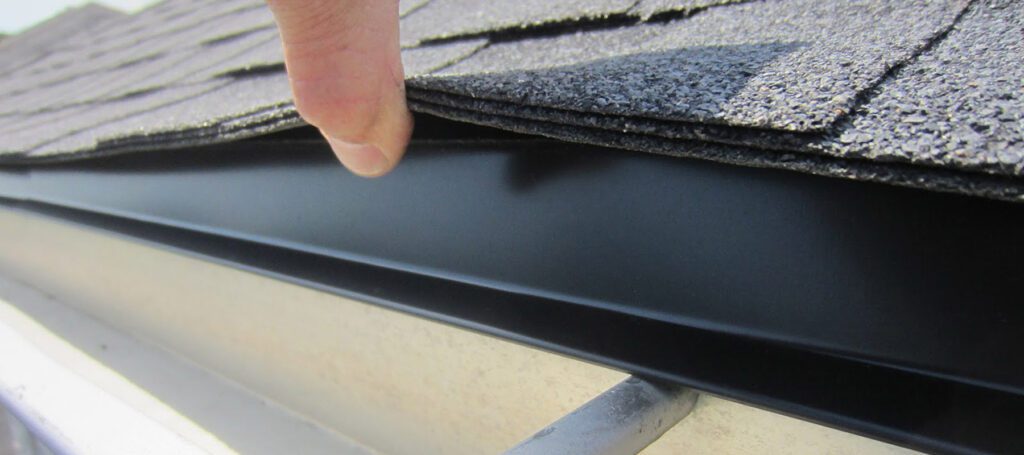In this article, we will explore the question of whether a drip edge can be installed after a roof is already installed. For those unfamiliar with the term, a drip edge is a vital component of a roofing system that helps protect your home from water damage. Whether you’re a homeowner looking to enhance your roof’s functionality or a curious individual seeking knowledge about roofing practices, we’ll provide you with the information you need to make an informed decision. So, let’s dive in and uncover the truth about installing a drip edge after a roof is already in place!

What is a Drip Edge?
Definition and Purpose
A drip edge is a type of metal flashing that is installed along the edges of a roof to provide additional protection against water damage. It is typically placed under the shingles and extends past the edge of the roof, allowing water to drip away from the fascia and soffit. The main purpose of a drip edge is to prevent water from seeping into the roof structure, protecting both the roof and the underlying structure from potential damage.
Types of Drip Edges
There are several types of drip edges available, each designed to accommodate different roofing materials and installation methods. The most common types include L-shaped drip edges, T-shaped drip edges, and pre-formed drip edges. L-shaped drip edges are the most versatile and widely used, as they can be easily bent to fit the roof’s edge. T-shaped drip edges are often used in conjunction with tile roofs, providing extra protection against water infiltration. Pre-formed drip edges, on the other hand, are factory-made and designed to fit specific roofing profiles.
Importance of a Drip Edge
Protects the Fascia and Soffit
One of the key functions of a drip edge is to protect the fascia and soffit from water damage. Without a drip edge, water can seep into the gaps between the shingles and the fascia, leading to rot and deterioration of these important structural components. By directing water away from the edge of the roof, a drip edge helps to safeguard the fascia and soffit, prolonging their lifespan and saving you from costly repairs.
Prevents Water Damage
Water is one of the biggest threats to the longevity of a roof. If water is allowed to infiltrate the roof structure, it can lead to mold growth, rot, and structural damage. A drip edge acts as a barrier, preventing water from entering the vulnerable areas of the roof. By channeling the water away from the edge, a properly installed drip edge helps to keep your roof dry and structurally sound, preserving its integrity for years to come.
Increases Longevity of the Roof
Roof replacement is a significant investment, so it’s only natural that you would want your new roof to last as long as possible. By installing a drip edge, you are providing an extra layer of protection that can extend the lifespan of your roof. By preventing water damage and reducing the risk of leaks, a drip edge helps to maintain the structural integrity of the roof, ensuring that it remains functional and aesthetically pleasing for many years.

When Should a Drip Edge Be Installed?
During Roof Installation
Ideally, a drip edge should be installed during the initial roof installation. This allows for seamless integration with the roofing materials and ensures that the flashing is properly positioned and secured. When a drip edge is installed at the same time as the roof, it offers maximum protection from the start, minimizing the risk of any water damage or future issues.
During Roof Replacement
If you are replacing your roof, it is highly recommended to install a new drip edge along with the new roofing materials. This gives you the opportunity to address any potential issues with the existing drip edge and ensure that the new roof is properly protected. By installing a new drip edge during roof replacement, you can take advantage of the improved technology and materials now available, further enhancing the performance and longevity of your roof.
In Case of Damaged or Missing Drip Edge
In some cases, a drip edge may become damaged or go missing over time. When this occurs, it is important to address the issue promptly to avoid any potential water damage. If your roof is currently without a drip edge or if the existing drip edge is damaged, it is possible to install a new drip edge after the roof is installed. While this may require additional steps and precautions, it can still be an effective way to protect your roof from water damage.
Steps to Install a Drip Edge After a Roof Is Installed
Assessing the Existing Roof
Before installing a drip edge after the roof is installed, it is crucial to assess the current condition of the roof. Check for any signs of damage or areas where water may be seeping in. Address any existing issues before proceeding with the installation of the drip edge.
Removing Shingles and Underlayment
To install a drip edge after the roof is installed, it is necessary to remove a portion of the shingles and underlayment along the roof edge. Carefully lift the shingles and underlayment, taking care not to damage them, and create a clear path for the drip edge installation.
Applying Underlayment and Ice and Water Shield
Once the area is prepared, apply a new layer of underlayment and an ice and water shield. This will provide an additional layer of protection against water infiltration and help create a watertight seal.
Installing the Drip Edge
Measure and cut the drip edge to fit the length of the roof edge. Secure it in place using nails or screws, ensuring that it is properly aligned and allowing for proper water runoff.
Reinstalling Shingles
After the drip edge is installed, carefully reinstall the shingles and underlayment. Ensure that they are positioned correctly and securely fastened to maintain the integrity of the roof.

Potential Challenges When Installing a Drip Edge After Roof Installation
Difficulty in Removing Shingles
When installing a drip edge after the roof is installed, the process may involve removing a portion of the shingles. This can be challenging, especially if the shingles are brittle or difficult to detach. Take your time and use the appropriate tools to minimize any potential damage to the shingles.
Compatibility Issues with Underlayment
The underlayment used during the initial roof installation may not be compatible with the new drip edge. Ensure that the underlayment and the drip edge work together effectively to provide optimal protection against water infiltration.
Ensuring Proper Alignment and Overlap
Proper alignment and overlap are crucial when installing a drip edge after the roof is installed. Inaccurate installation can compromise the effectiveness of the drip edge, allowing water to seep into the roof structure. Take precise measurements and use a level to ensure correct alignment.
Potential Damage to Roof Structure
Improper installation of a drip edge can potentially cause damage to the roof structure. It is essential to follow proper installation techniques and guidelines to minimize any risks. If you are unsure about the installation process, it is best to seek professional help.
Tips and Best Practices for Installing a Drip Edge After Roof Installation
Seek Professional Help
While it is possible to install a drip edge after the roof is installed, it is recommended to seek professional assistance, especially if you are not familiar with roofing installation techniques. A professional roofer will have the necessary experience and expertise to ensure that the drip edge is installed correctly and effectively.
Use Quality Materials
When installing a drip edge after the roof is installed, it is essential to use high-quality materials. Investing in durable and weather-resistant materials will ensure the longevity and effectiveness of the drip edge. Consult with a roofing professional or supplier to determine the best materials for your specific roof type and climate.
Follow Manufacturer’s Guidelines
Always refer to the manufacturer’s guidelines when installing a drip edge after the roof is installed. These guidelines will provide specific instructions and recommendations for proper installation techniques, guaranteeing optimal performance and protection.
Take Safety Precautions
Roof installation can be a dangerous task, particularly when working at heights. Ensure that you take appropriate safety precautions, such as wearing proper safety equipment, working with a partner, and positioning ladders or scaffolding securely. If you are uncomfortable with working at heights or lack experience, it is best to leave the installation to the professionals.

Cost of Installing a Drip Edge After a Roof Is Installed
Material Costs
The cost of materials for installing a drip edge after a roof is installed can vary depending on the type of drip edge, the size of the roof, and the quality of the materials used. Generally, the price range for drip edge materials can range from $0.50 to $2.00 per linear foot. It is advisable to consult with roofing suppliers or professionals to get an accurate estimate of the material costs for your specific project.
Labor Costs
Labor costs for installing a drip edge after a roof is installed will vary depending on the complexity of the installation and the region where you live. On average, you can expect to pay between $200 and $500 for the labor required to install a drip edge. Again, it is recommended to consult with local roofing professionals to obtain accurate labor cost estimates for your specific project.
Conclusion
A drip edge is an important component of your roofing system that provides protection against water damage and increases the longevity of your roof. While it is ideal to install a drip edge during the initial roof installation or replacement, it is possible to install one after the roof is installed. However, this process comes with potential challenges, such as removing shingles, ensuring proper alignment, and compatibility issues with the existing underlayment. It is crucial to follow proper installation techniques, use quality materials, and take safety precautions. Seeking professional help is recommended to ensure a successful and effective installation. By investing in a drip edge, you are safeguarding your roof, fascia, and soffit from water damage and potentially extending the lifespan of your roof.
